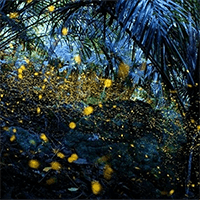- Age 10~Age 100
- 1~2 hours
- 10:00 / 14:00
Why do not you experience the painting of Hakata Jukyusen? At the home town hall, under the craftsmen, painting experience has become easy to do. How about touching Hakata's tradition and making memories?
- Age 10~Age 100
- 1~2 hours
- 10:00 / 14:00
Why do not you have a painting experience by Hakata Zagako? At the home town hall, under the craftsmen, painting experience has become easy to do. How about touching Hakata's tradition and making memories?
- Age 4~Age 100
- 1~2 hours
A top-of-the-frame painting experience that even beginners can easily enjoy! Let's make your own piece with a free sense. A skull pattern is also possible. You can experience it from a 4-year-old child. Please make one per person. Tools are available here. Works On the day You can take it home.
- Age 4~Age 100
- 1~2 hours
A local horse toy painting experience that you can easily enjoy even for the first time! Let's make your own messy horse with a free sense. You can experience it from a 4-year-old child. Please make one per person. Tools are available here. Works On the day You can take it home.
- Age 4~Age 100
- 1~2 hours
Kokeshi doll painting experience that even beginners can enjoy casually! Let's make your own kokeshi doll with a free sense. You can experience it from a 4-year-old child. Choose the size of the kokeshi doll from large size (about 20cm) and small size (about 17cm). Works On the day You can take it home.
- Age 1~Age 100
- 1~2 hours
- 09:00 / 14:00
You can experience sketching with a brush and paint on unglazed dough. If you experience a surprisingly difficult brush stroke, you will be amazed by the craftsman's technique and will surely be fascinated by the delicacy of the pattern! Please enjoy the atmosphere of a long-established factory! ◆ Recommended points of this plan ◆ Did you know that there are two types of "painting" in one word? One is overpainting. It is a method of coloring the baked bowl. This method is generally called porcelain. And the other is sketching. I will draw with a brush and paint on a unglazed vessel. It is surprisingly difficult to draw a thin line because it requires delicacy and attention, but if you make a draft with a pencil or if you make a mistake, you can scrape it with a bamboo spatula. Work on it for an unlimited amount of time.
- Age 3~Age 100
- 1~2 hours
- 10:00 / 13:00 / 15:30
It will be a 90-120 minute pottery plan where you can experience from molding to painting You can make whatever you like, such as rice bowls, small plates, and chopstick rests.
- Age 6~Age 99
- 1~2 hours
- 10:00 / 11:30 / 13:30 / 15:00
In this program, while receiving lectures from traditional Kutani ware craftsmen and instructors, you can experience painting with Kutani Gosai (green, yellow, dark blue, purple, red) on a white base baked in a Miyayoshi pottery kiln. We will tour the factory. * For the second and subsequent times, if you wish, you can shift the factory tour time to painting time. ~ Flow of the day ~ 9:50 Meeting / Reception Explanation of Miyayoshi Ceramics 10:00 Site tour (10 minutes) Tour of the manufacturing site of various materials such as potter's wheel and other casting. 10:10 Overpainting experience (50 minutes) While receiving lectures and follow-ups from the traditional craftsmen and instructors of this kiln, you will be asked to draw with the overpainting paint according to the drawings you designed in advance!
- Age 3~Age 100
- 1~2 hours
- 10:00 / 11:00 / 12:00 / 13:00 / 14:00 / 15:00 / 16:00
The painting experience class is a class where you can experience by extracting the "painting" process of attaching a pattern to the base kit (things that have been unglazed) in the process of making ceramics. It is a simple plan and recommended for anyone.
- Age 16~Age 99
- 1~2 hours
- 10:00 / 14:00
The back side of the colorful color. Among the many "traditions" and "evolutions" of Nishikiyama kiln, there are many fans in the world view and charm of the work, and we pursue "Kinrande" works using gold leaf that we create independently. Kinrande kiln. The second generation owner, Minori Yoshita, is widely known as a living national treasure of Kutani ware. In this program, you can see the inquisitive spirit transmitted to the Nishikiyama kiln and experience a part of it in order to demonstrate the creativity that can be said to be a transcendental technique that looks very profane. Nishikiyama kiln with a history of over 100 years. In addition to traditional techniques, we are also working on new things in the face of the big question, "How will we deliver it in the next 100 years?" We will review traditional techniques, search for a way that is suitable for our current life, and train the staff of the kiln. Nishikiyama kiln manufacturing aims to integrate tradition and innovation. "Kinrande" Kinrande refers to the decorative technique of fixing gold on colored ceramics and its works. Beginning with the Song dynasty in China, it flourished from the Ming dynasty to the Qing dynasty. In Japan, the Kinrande appeared from the Genroku era of Edo, using the Ming dynasty's Jingde Town kiln as an example, and it resembled the "Kinrande" woven fabric woven with gold thread and cut gold leaf, so it came to be called by this name in Japan. rice field. There are techniques such as "drawing gold" to draw a line with gold paint, "swinging gold" to scatter gold powder, and "pasting gold" to paste gold leaf. * For foreign nationals: Information on the day will be in Japanese only.
- Age 13~Age 99
- 1~2 hours
- 10:00 / 14:00
The back side of the colorful color. Among the many "traditions" and "evolutions" of Nishikiyama kiln, there are many fans in the world view and charm of the work, and we pursue "Kinrande" works using gold leaf that we create independently. Kinrande kiln. The second generation owner, Minori Yoshita, is widely known as a living national treasure of Kutani ware. In this program, you can see the inquisitive spirit transmitted to the Nishikiyama kiln and experience a part of it in order to demonstrate the creativity that can be said to be a transcendental technique that looks very profane. Nishikiyama kiln with a history of over 100 years. In addition to traditional techniques, we are also working on new things in the face of the big question, "How will we deliver it in the next 100 years?" We will review traditional techniques, search for a way that is suitable for our current life, and train the staff of the kiln. Nishikiyama kiln manufacturing aims to integrate tradition and innovation. "Kinrande" Kinrande refers to the decorative technique of fixing gold on colored ceramics and its works. Beginning with the Song dynasty in China, it flourished from the Ming dynasty to the Qing dynasty. In Japan, the Kinrande appeared from the Genroku era of Edo, using the Ming dynasty's Jingde Town kiln as an example, and it resembled the "Kinrande" woven fabric woven with gold thread and cut gold leaf, so it came to be called by this name in Japan. rice field. There are techniques such as "drawing gold" to draw a line with gold paint, "swinging gold" to scatter gold powder, and "pasting gold" to paste gold leaf. * For foreign nationals: Information on the day will be in Japanese only.
最近チェックしたプラン
Please wait a moment
![[Fukuoka / Hakata] Experience Hakata's traditional crafts-Hakata top painting experience- (held on Wednesday)の画像](https://img.activityjapan.com/10/17037/10000001703701_4NMzADtU_3.jpg?version=1641711425)
![[Fukuoka / Hakata] Experience Hakata's traditional crafts-Hakata Hariko painting experience- (held on Tuesday)の画像](https://img.activityjapan.com/10/17036/10000001703601_2ECAksi7_3.jpg?version=1641711126)
![[Iwate/Morioka] Experience traditional crafts! "Picture painting experience" empty-handed OK! You can participate from 4 years old!の画像](https://img.activityjapan.com/10/11764/10000001176401_JEhSjMW3_3.png?version=1579482202)
![[Iwate/Morioka]Iwate local toys! "Crazy horse painting" empty-handed OK! You can experience from 4 years old!の画像](https://img.activityjapan.com/10/11761/10000001176101_vvOl0giQ_3.png?version=1579482327)
![[Iwate/Morioka] Let's make a free sense "Kokeshi painting experience" empty-handed OK!の画像](https://img.activityjapan.com/10/11758/10000001175801_JEhSjMW3_3.png?version=1579482405)
![[Saga/Arita] Painting experience ~ Hand-painted sketch in the pottery town "Arita" ♪の画像](https://img.activityjapan.com/10/35245/10000003524501_lxw02jge_3.jpg?version=1644977347)
![[Sapporo Hokkaido] Beginners are welcome to enjoy the “Ceramics Experience Plan” from molding to painting! You can also stop at Jozankei Hot spring!の画像](https://img.activityjapan.com/10/12240/10000001224001_WObeEjYP_3.jpg?version=1601362958)
![[Ishikawa / Komatsu City] Experience painting with a craftsman Kibun while observing various molding methods of Kutani ware.の画像](https://img.activityjapan.com/10/40280/10000004028001_oGSAB4xw_3.jpg?version=1643775486)
![[Aichi/ Seto City] OK by hand! For fun memories, you can also enjoy “painting plans” for small children! (90 minutes)の画像](https://img.activityjapan.com/10/12183/10000001218301_2UHJ2rbS_3.jpg?version=1571796123)
![[GEMBA Monozukuri Expo 2023] Immerse yourself in the world of beautiful glazed gold colors created by living national treasures with a gallery tour and brocade experienceの画像](https://img.activityjapan.com/10/51016/10000005101601_X9MeawNo_3.jpg?version=1695888317)
![[Ishikawa/Komatsu City] KUTANism 2023 Workshop Tour: Immerse yourself in the beautiful world of glazed gold color created by a Living National Treasure, gallery tour and Kinrande experienceの画像](https://img.activityjapan.com/10/50978/10000005097801_X9MeawNo_3.jpg?version=1695703882)







